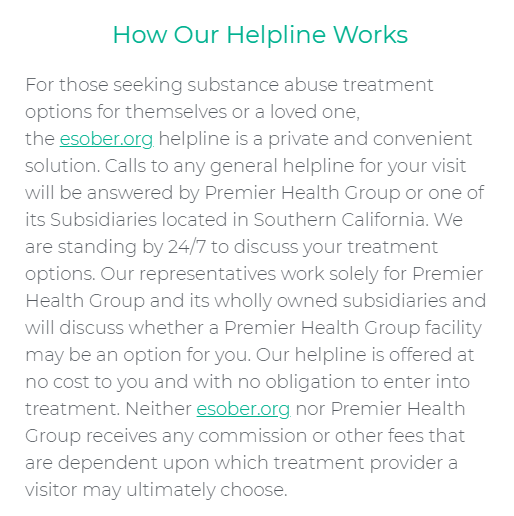Halfway houses offer an intermediate step between drug rehabilitation and independent living. They provide a safe environment in which people can live while readjusting to life outside of treatment. They can be spent a few weeks in one or several months, depending on the person’s needs.
If you or a loved one close to you is recovering from an addiction and is in need of a halfway house, this article will share all the facts about these facilities that you need to know about before you find one.
What Is a Halfway House?
Also known as sober homes or transitional living homes, these facilities offer a therapeutic environment to people in the process of recovery. They provide the necessary tools to help people reintegrate into mainstream society without relapsing.
The facilities are run by experienced staff, who are drug and alcohol counselors and therapists. They are also assigned a case manager to support them during the process.
Who Can Benefit From a Halfway House?
Anyone who has been admitted to and completed a drug rehabilitation program can benefit from a halfway house. However, the length of time spent in an inpatient rehab center and the severity of the addiction will determine the length of stay in the facility.
Most people stay between two and four months in a halfway house. After this period, they are moved to a sober living facility or to independent living.
Who Typically Stays in a Halfway House?
These facilities are mostly for adults. However, there are facilities for adolescents. However, children should be supervised by a parent or guardian at all times.
People aged 55 and above can also stay in a halfway house. There are facilities that offer services to this specific demographic.
Inpatient rehabilitation is designed to be an all-inclusive program. It is not just the cost of the treatment that some people have problems with, but also the time taken away from work, as well as the social stigma associated with rehabilitation centers. Strides have been made to make the process more accessible to all.
It is not just adults who can benefit from a halfway house; and it is also adolescents. There are inpatient rehab centers that cater specifically to adolescents suffering from substance abuse. The teenage brain is still developing, and it is important to help them fight addiction before it gets worse.
What Are the Benefits of Halfway Houses or Sober Living Homes?
The facilities help people adjust back to society as well as provide them with the necessary tools to ensure that they live a drug-free life.
Here are some of the benefits of these facilities:
- Reduced Crime
There is a common misconception that most addicts return to their crimes after rehabilitation. This is not the case. Most addicts who complete the rehabilitation process are able to stay clean for the rest of their lives.
27% of those who complete inpatient rehab and then go to a halfway house are able to stay clean. Whereas only 20% of those who do not go to a halfway house return to their destructive habits.
- Better Health
Many people who have been addicted to drugs and then get clean also have other health issues, especially with meth. These include depression, weight gain, and other harmful habits.
Hiring a case manager and attending a halfway house is a good way to help people reintegrate into mainstream society and remain healthy at the same time.
- Reduced Risk of Relapse
Halfway houses help people transition back to society after being in rehab, it helps them stay clean, and it reduces the risk of relapse.
- Better Employment
Halfway houses help people in the transition from rehab to the workforce. They help people develop a positive mindset and skills that will be useful to them when they are back into the outside world. These facilities also provide the necessary training and education to help people get back into the workforce.
- Disease Prevention
Halfway houses provide the necessary tools to help people in the transition from rehab to the workforce. They help people deal with the stress associated with getting a new job and also the issues that arise from working with people from the outside world.
They help them deal with the stress of working with people from the outside world and also help them deal with the stresses of working and living in a different environment. Many of the people in halfway houses have to work, and because of this, they are in contact with people outside of the facilities; these people help those staying in halfway houses maintain the gains they have made during rehab.
- Better Mental Health
Halfway houses help people learn how to live without drugs and alcohol again. They help them to cope with the stresses of life and to deal with the stresses that come with living in a home.

- Improved Personal Relationships
During rehab, people learn to relate better to others, and this is transferred to the outside world after treatment. People who are in halfway houses are able to improve their personal relationships.
- Better Relationships
Halfway houses help people develop a sense of social responsibility. They also help people gain a sense of responsibility, and this is transferred to the outside world after rehabilitation. People who are in halfway houses are able to develop better relationships with people in the outside world.
- Improved Health
Halfway houses help people to improve their overall health. This is because they are able to provide their clients with the necessary training that will help them live healthy lifestyles.
- Improved Self Esteem
Halfway houses help people to regain their self-esteem. This is because people are able to live in a safe, nurturing environment, they are able to recover from their drug and alcohol addiction, and they are able to regain their self-esteem.
- Prepares Residents for a Career or Education
Halfway houses provide the necessary networking opportunities and education that will help current residents get back into the workforce and prepare them for a career.
- Improve the Quality of Life
Halfway houses help people to improve their quality of life. This is because people who are in halfway houses are provided with the necessary tools to live a healthy, happy, drug-free lifestyle.
Finding the Right Halfway House
Not all halfway houses are created equal. There are different facilities that provide different services. Not everyone will benefit from the same services, so it is important to find the right halfway house for your needs. Taking the time to look around at the available options will ensure that you emerge with the best possible decision.
Conclusion
Halfway houses are not a new concept. They have been around for a long time, although the way in which they are run has changed over time. There are many different types of halfway houses, and there are many different reasons for people to go to these facilities.
There are a lot of benefits to these facilities, not just for the people in them but for the people around them as well. It is important to understand what is involved in entering a halfway house, the process, and the rules and regulations before jumping into these facilities.
Sources:




